June 4, 2025 | 17:22 GMT +7
June 4, 2025 | 17:22 GMT +7
Hotline: 0913.378.918
June 4, 2025 | 17:22 GMT +7
Hotline: 0913.378.918
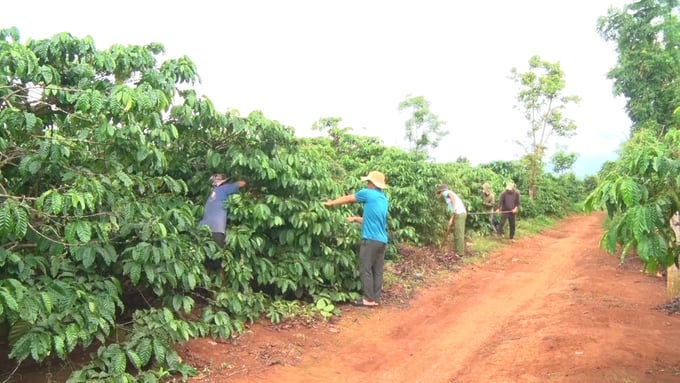
Community fundraising coffee garden in Dok Rong village. Photo: Dang Lam.
In 2008, on 2.6 hectares of unused land, the BahNar people in Dok Rong village (Glar commune) began to grow coffee. By the time of harvest, the coffee garden has generated an income of 200 - 250 million VND per year. This money is given back to the community for many purposes, such as buying fertilizer, irrigating coffee gardens, buying gifts for poor households in the village, contributing to building nearly three kilometers of roads, repairing more than 400 meters of inner-field roads, and constructing new community houses in the village, etc.
In order for the model to work effectively, the Dok Rong village works under the Farmers’ Association, whereby their garden is divided into ten groups. Each slot is then assigned to a household to manage and care for. On average, each group takes care of 160 - 200 coffee trees, each year generating a corresponding income of a minimum of 30 million VND. Group members join hands to fertilize, water, weed, and harvest the garden. In order to well sustain the outcome, the groups also take turns patrolling to protect their coffee products.
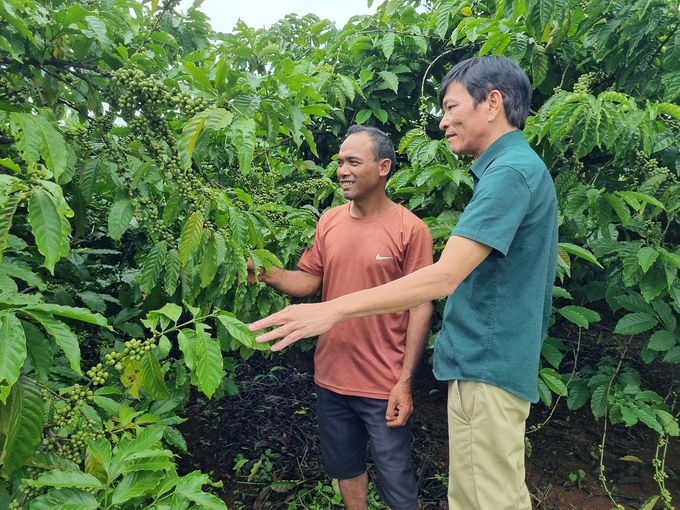
People are happy to take care of community coffee gardens. Photo: Dang Lam.
Guiding us through thousands of fresh coffee gardens in his community, Mr. Am Yuy (40 years old, BahNar ethnic group) introduces that the community coffee garden of Dok Rong village is divided into ten groups. His Group One comprises 21 households managing and caring for over 200 coffee trees. In the previous coffee harvest, over 200 coffee plants of Group One earned nearly 40 million VND.
“This revenue is remitted to the village fund. Whenever there is a collective activity in the village, this fund is used for operating expenses. Even civil works are extracted from this fund. Our people do not have to contribute their personal money like previously," Mr. Am Yuy said.
Also a member of Group One, Mr. Lanh, shared: “We consider the community coffee garden as our own family’s coffee garden. We take care of it by fertilizing, watering, and harvesting – each group member is responsible, and participates voluntarily and enthusiastically. Therefore, the community coffee garden is always green and productive, like any garden in the village. The use of the fund is agreed upon by all households in the spirit of democracy".
Sharing about the success of this model, Mr. Wut, the Head of the Working Committee of the Dok Rong Village, said: “In the past, it was challenging to mobilize people to contribute to collective activities, since many people in our village were poor. When we saw the large area of unused land in the village, we mobilized people to grow coffee and fundraise. On the one hand, we work to avoid wasting land funds and paint a beautiful facade for the village. On the other hand, there is a source of money to raise funds and use general expenses for activities in the village. Seeing that this work is practical and significant, all the village people have actively responded, working together to build a green coffee garden like today".
From the success of the coffee fundraising model in Dok Rong village, the remaining eight villages of Glar commune have boldly followed and replicated it. Many villages have effectively implemented such as Ktu, Dor 1, Dor 2, Klah... The farmers have established funds from the commune's community coffee garden. The collective fund is used for community activities and supporting poor households to afford farming activities.
Mr. Y Suon, Deputy Secretary of the Party Committee of Glar Commune, confirms: “The model of coffee fundraising proves villagers’ creativity. The model has since positively changed people’s awareness and progress. It also brings the community closer so that villagers join hands in developing the economy, constructing public works, improving life quality, and actively painting a beautiful facade for the countryside and homeland”.
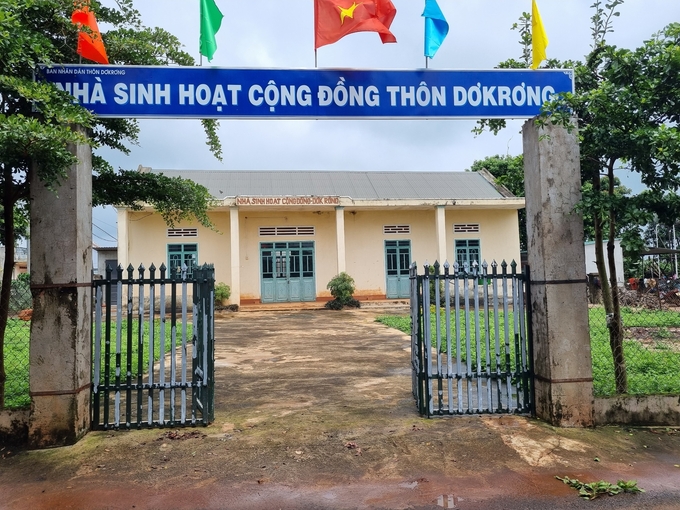
People use the community fund to build a cultural house in Dok Rong village. Photo: Dang Lam.
Vice Chairman of the People’s Committee of Glar commune, Mr. Bui Quang Thoai, informs that the commune's total coffee area is 2,000 hectares. As for the community coffee model, the commune has about 15 hectares for fundraising. The Glar commune has maintained and developed this model for more than ten years, spreading practical values to 9 villages in the commune. With an area of nearly 15 hectares, this model earns more than 1 billion VND annually from selling coffee products. This profit has helped many poor households in the commune to afford production fees, and at the same time, build public works such as cultural houses in each village, roads, and intra-field traffic, altogether developing sustainably.
According to Mr. Thoai, this model is meaningful and beneficial. Besides creating funds to serve everyday activities, and reducing the financial burden for each household, this model also shows a high spirit of solidarity in the village community. “Currently, the commune has not arranged financial resources to support this model. But the commune always cares and encourages people to voluntarily participate and maintain this meaningful model," Deputy Chairman Bui Quang Thoai shares.
Lam Anh Agriculture and Service Cooperative is located in Glar commune. The cooperative has accompanied the community in developing the coffee garden over the years. It has regularly provided villagers with materials and techniques and organized technical workshops. These activities concurrently develop a community coffee garden and provide households with helpful knowledge to take care of the garden.
Director of Lam Anh Agriculture and Service Cooperative, Mr. Le Huu Anh, states: “This year, the cooperative has provided free support for people to take care of community coffee gardens through technical training in foliar fertilizers, root fertilizers, microbial products, and tree care.”
Originating from Dok Rong village, the crowdfunding model of coffee growing has spread throughout the commune. The model has received enthusiastic support from the commune authorities and a significant contribution from local businesses. This support proves the model’s practical values and effectiveness, improving the material and spiritual life of the people.
This is also a typical example of the solidarity and creativity of ethnic minority communities in the villages of the Central Highlands in the new period. Hopefully, the effectiveness of this model will be further replicated in other localities, contributing to the development of agriculture, rural areas, and remote areas of the majestic Central Highlands.
Secretary of the Dok Rong Village Party Committee, Mr. AMyen shares with excitement: “Since we have a stable source of revenue, the village has invested in facilities and many other utilities, helping the villagers live better than before. The fundraising coffee model only reduces the financial burden for organizing ceremonies and celebrations, but also creates the opportunity to regularly exchange culture and sports, thereby improving villagers’ spiritual life.”
Translated by Quynh Chi
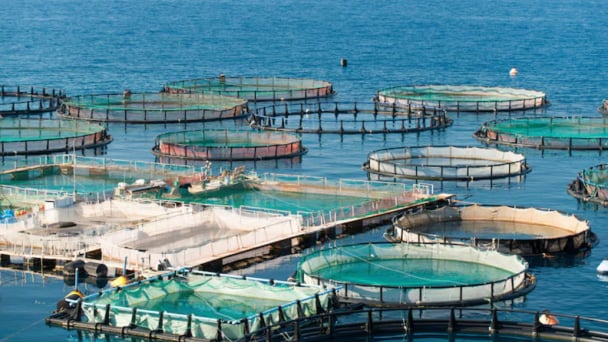
(VAN) Technology is redrawing the map of Vietnamese aquaculture: more modern, greener, and more sustainable.
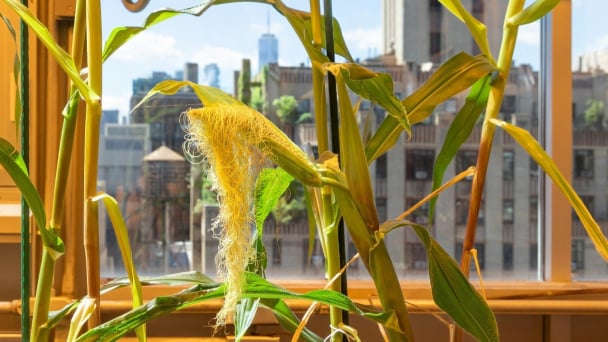
(VAN) Novel process harnesses machine learning to reveal groups of genes that determine how efficiently plants use nitrogen.

(VAN) Several scientists and farmers are experimenting with soil treatment in some key durian-growing regions such as Cai Lay (Tien Giang), Dak Song, Gia Nghia, and Dak R’lap (Dak Nong).
/2025/05/25/4127-3-073637_820.jpg)
(VAN) Thanks to the promotion from an FAO-implemented project, vegetable production in greenhouses in Moc Chau has seen strong development, from 1.5 hectares in 2021 to nearly 50 hectares in 2024.

(VAN) FAO has recently supported USD 140,000 to implement the project 'Risk mitigation human-animal interface risks through disease control initiatives in pig farming.'

(VAN) The People's Committee of Tra Vinh province has approved an adjustment to the investment policy for the Green Hydrogen Plant project, increasing its area to approximately 52.76 hectares.
![Reducing emissions from rice fields: [2] Farmers’ commitment to the soil](https://t.ex-cdn.com/nongnghiepmoitruong.vn/608w/files/news/2025/05/05/dsc08881jpg-nongnghiep-140632.jpg)
(VAN) Clean rice cultivation model in Thuong Tan commune, Bac Tan Uyen district, is assisting local residents in achieving sustainable agriculture by substantially reducing costs, increasing productivity, and protecting the environment.